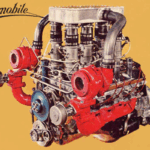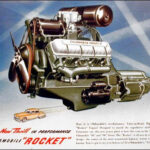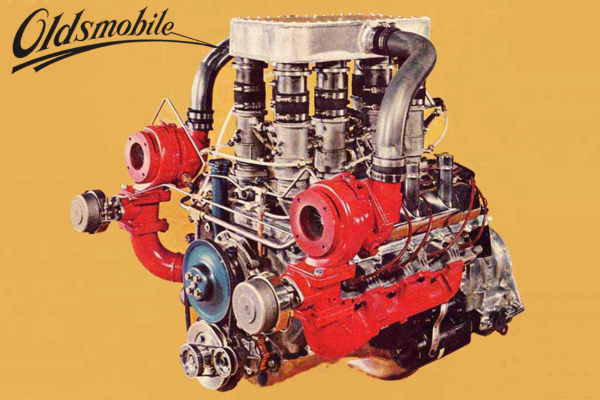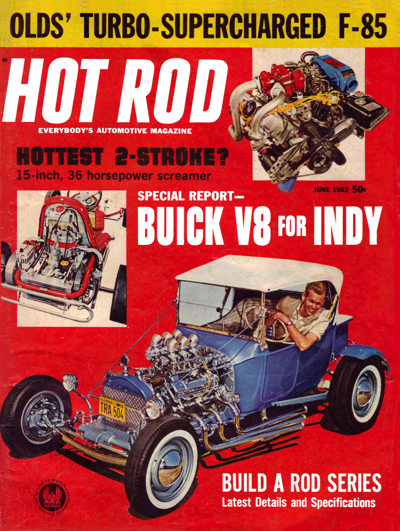By Society Staff –
Reprint with Permission Only
The Carter AFB (Aluminum Four Barrel) was the second four-barrel carburetor produced by Carter, after the WCFB. AFB’s appeared in 1957 and were used as original equipment on most makes of cars at one time or another up to 1971. The Carter AFB is the carb that powered the Hemi and the Dual Quad 409 with the last notable OEM application as the dual-quad setup on 1971 MOPAR 426 Hemi engines. Interestingly, some Ford AFB’s weren’t made of aluminum at all and were in fact cast out of zinc.
Carter AFB’s was produced as the Carter Performance Series carbs until 1998. They are currently available as “Edelbrock AFB” carbs. Most parts, including tuning parts like the jets and metering rods, are interchangeable between the original Carter AFB’s and the currently produced Edelbrock carbs.

Carter AFB carburetor – Competition Series, but typical of AFBs
The Carter AFB is offered in a range of sizes, from 500 CFM to 750 CFM. The Carter AFB has a universal fuel delivery curve that allows it to work well if simply “bolted on”, the best results are achieved by optimizing the carburetor to the specific engine and vehicle. BFIC Fuel Systems www.CarbsOnly.com and Edelbrock www.edelbrock.com offer all the components needed to fine-tune these carbs for any application.
All AFB carburetors have four metering jets. The jets on the secondary side are smaller than those on the primary. The larger primary jets are restricted by metering rods that control the part throttle mixture. Each metering rod has both a large and a small diameter machined step. These steps limit the amount of fuel that flows through the jet. The smaller diameter is at the bottom of the rod and controls wide-open throttle fuel delivery.
The upper diameter step limits part throttle fuel flow. The rod is held in a given position within the jet by a calibrated spring, which moves the rod between the steps in response to the engine vacuum. Different springs are available and can be used to alter the enrichment point as a cure for a transitional sag or flat spot or to compensate for performance camshafts having a low manifold vacuum.
Typically WOT fuel mixture is determined by “reading” the spark plugs or by comparing drag strip trap speeds. The mixture is changed by using larger or smaller jets on the secondary side of the carb, and by changes to either the jets or the metering rods on the primary side. Jet changes affect both wide open throttle fuel delivery and part throttle performance, while the metering rods can alter one without significantly affecting the other.
Changing the metering rods to ones having a smaller lower diameter and an unchanged upper diameter will richen wide open throttle while retaining the same midrange economy. To do this with other carburetors you will need to remove the float bowls and metering blocks and drill out the power valve channel restrictions. With the AFB this is done without even taking the top off the carburetor!
All Carter AFB’s feature mechanical secondaries. To eliminate any bogs or hesitations as the secondaries open, a secondary velocity valve is used. This valve allows airflow through the secondaries in response to engine requirements. The opening rate of this valve can be altered by drilling the counterweight, but this is rarely necessary. It is also possible to eliminate some secondary bog conditions by removing the small tubes that restrict the “early feed” fuel supplies at the edge of the velocity valve. This modification requires the removal of the secondary cluster assemblies, and like drilling the counterweight, it is not usually necessary.
The accelerator pump circuit controls throttle response and off-idle acceleration. Too little pump shot will create a flat spot or hesitation, while too much will result in sluggish acceleration and possible black smoke from the exhaust. Edelbrock offers a kit with different pump squirters to fine-tune this fuel delivery. Additional tuning is done by changing the position of the pump link in the pump arm, and by altering the pump stroke. These three adjustments allow you to vary the amount of fuel, the duration of the pump “shot” and the timing of its delivery.
The AFB is manufactured with two 0.101″ diameter needles and seat assemblies. There are variations with diameters of 0.111″ and 0.120″. While the larger ones offer more total flow potential, they do so at the cost of some fuel control capability. The 111″ size is the largest that is practical for normal street use. All AFB’s are calibrated for use with 5 psi fuel pressure.











